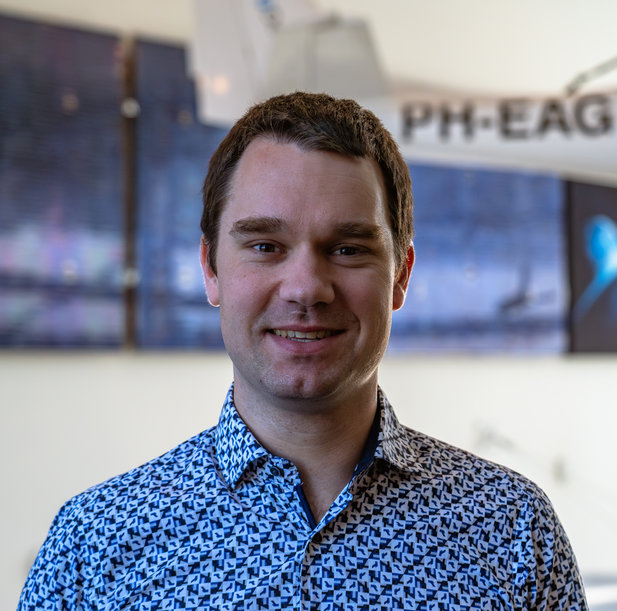Veni grant for ’Simulate the interaction between flows and surfaces in computer models’
Five promising researchers from TU Delft's Faculty of Aerospace Engineering have been granted Veni funding by the Dutch Research Council (NWO). This funding, totaling EUR 280,000 for each recipient, will empower the awardees to advance their individual research concepts over the course of the upcoming three years. Today we introduce Frits de Prenter.
Research
“The use of computer models for flows is essential for a large number of applications in technology and science, for example designing wind turbines. The Lattice Boltzmann Method (LBM) is a frequently used method in this field. This method has a fundamental weakness, however, which is the way in which the effect of the surrounding is imposed on the flow, for example the friction between the flow and wind-turbine blades. In STABILIZE, I will develop a computer algorithm that imposes this interaction in a different way, which fundamentally resolves the weakness. This enhances the accuracy and reliability of flow calculations.”

Frits de Prenter
“Most academic funding is meant to hire PhD students to carry out the research. A Veni grant stands apart in this regard, as it enables me to allocate time to personally dive into the research project.”
Demanding excessive resources
“I aim to develop efficient simulation techniques for fluid dynamics, that excel in both speed and precision. Despite the longstanding presence of computational fluid dynamics (CFD) techniques, significant limitations persist in our ability to simulate certain phenomena. Some scenarios demand excessive resources in terms of time and computational power, making simulations impractical for tasks such as design optimization, quantifying uncertainties, measurement data interpretation for e.g., health monitoring, and control algorithm calibration."
Completely novel method
"The Lattice Boltzmann method stands out as the most effective computational fluid dynamics (CFD) approach for numerous applications. However, it possesses a vulnerability in its treatment of flow-body interaction along the boundary, surface, or interface, where air flows around or through the bodies. This is especially evident when dealing with surfaces in motion, such as when analyzing aeroelasticity where elements like wings, propeller blades, or wind-turbine blades undergo deformation due to aerodynamic forces. Likewise, it applies to intricate surface shapes, such as factoring in the impact of surface erosion on wind-turbine blades during a simulation. In this project, my aim is to pioneer a completely novel method for computing this interaction. By addressing the Lattice Boltzmann Method's limitations, I aspire to extend the existing limits of computational fluid dynamics capabilities."
Computational fluid dynamics
"Numerical simulations play a pivotal role in the field of engineering, offering a host of advantages. Simulations outpace experiments in terms of both speed and cost-effectiveness. Moreover, they frequently yield insights unattainable through experiments alone. Consequently, simulations streamline product development processes, fostering the creation of enhanced and resource-efficient products and technologies. Consider computational fluid dynamics, which is integral to the conception of products characterized by attributes like silence and efficiency; low drag for vehicles and high aerodynamic efficiency for propellers. This pursuit is vital for the development of e.g., aircraft (including electronic ones), wind turbines and ventilation systems, and ultimately for the advancement of a sustainable society."